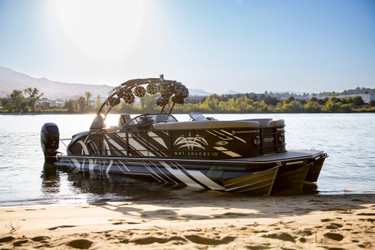De-Winterize Your Boat For Summer
Posted by Wet Sounds on 12th Apr 2023
Summer is just around the corner, so it's time to begin the process of dewinterizing your boat! Let’s explore the topic of dewinterization, covering its meaning, expenses, and some processes involved. Our guide on boat dewinterizing will equip you with all the necessary information to prepare you for a smooth sailing experience. Read on!
Dewinterization provides a valuable opportunity to examine and clean critical components of your boat, such as the engine, propeller, battery, belts, fuel lines, and more, following the long period of storage or exposure to the elements outdoors. Through this process, you can identify any required maintenance, repairs, or damages that your boat may need before launching it into the water. A thorough dewinterization procedure can potentially save you a considerable sum of money in the future, making it a vital step towards ensuring the longevity and efficiency of your vessel.
As soon as the weather starts warming up and the sun shines, you might feel the urge to dewinterize your boat. However, if you reside in an area where you experience fluctuating temperatures ranging from spring-like warmth to snow and sleet within a day, it's crucial to hold off until the last spring freeze.
Rest assured, we hold no judgment if you prefer not to handle dewinterizing on your own. Opting for professional dewinterization services can be a cost-effective approach, given the time and energy saved. The average cost typically ranges around $300, although it may vary based on the size of your vessel. For instance, a single outboard motor could cost approximately $100 to dewinterize, while a larger cabin cruiser could incur costs upward of $500-$600 or more.
16 Steps to Dewinterize Your Boat:
- Remove boat cover and check for bugs
- Examine the engine and propeller
- Inspect fuel lines, fuel, and connections
- Check spark plugs, the distributor, and the carburetor
- Scan thermostats and water pumps
- Check blige pump
- Inspect the cooling system and renew the antifreeze as needed
- Replace battery
- Check for physical damage
- Thoroughly clean your boat
- Polish and wax
- Attach electronics
- Check navigational lights
- Check the power steering cables
- Reload the safety equipment and add the finishing touches
- Relax and enjoy

